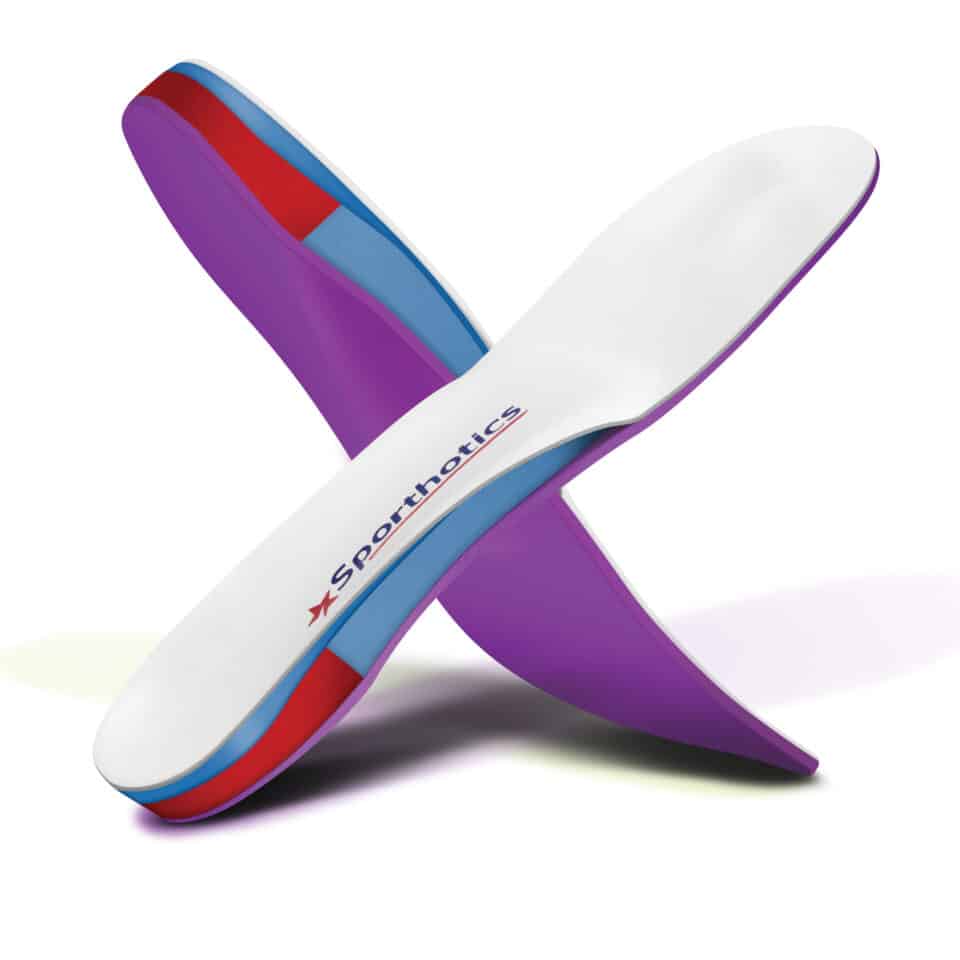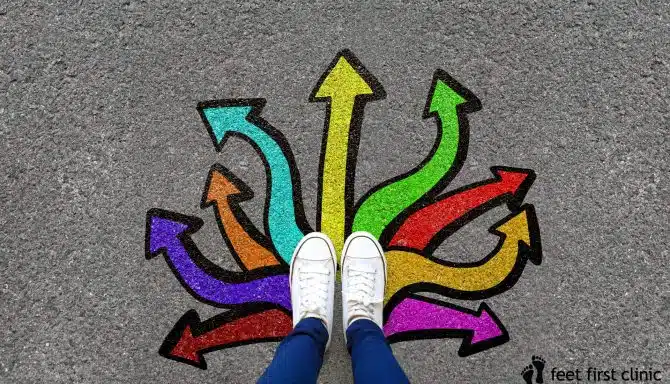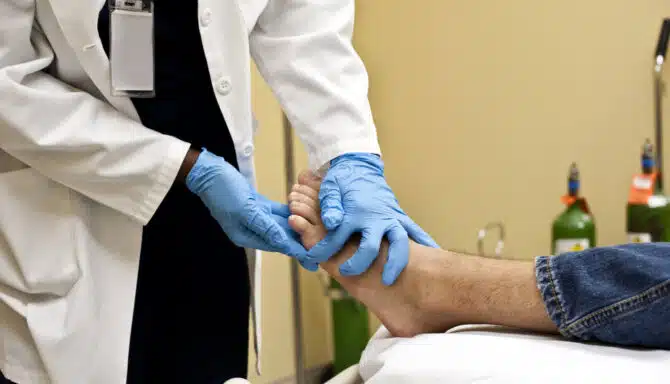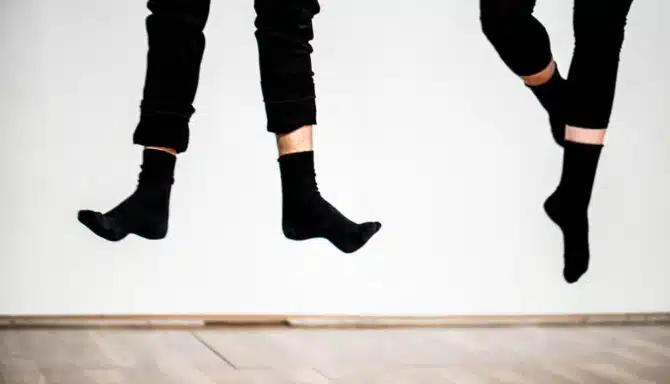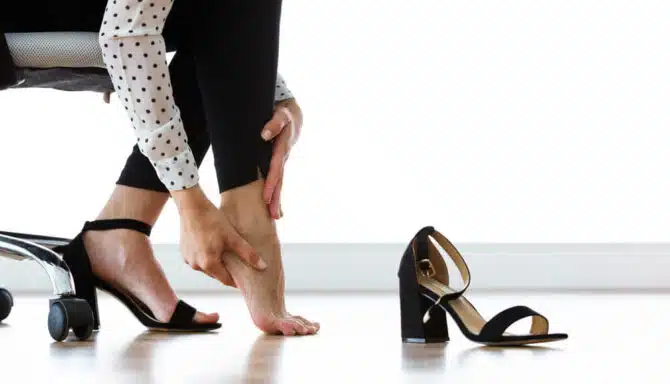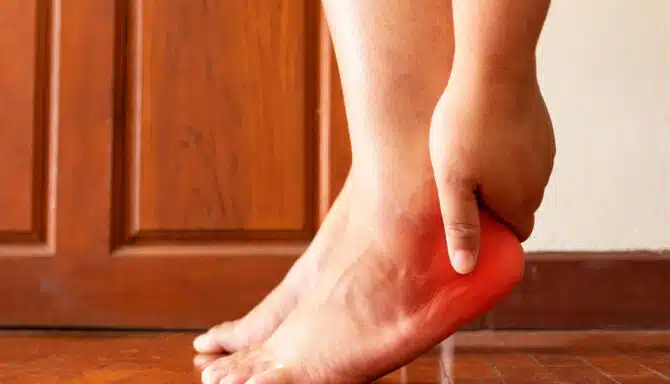[ps2id id=’top’ target=”/]Want more information about custom orthotics? You’ve come to the right place. In this article we will answer the following:
- What Are the Benefits of Custom Orthotics?
- What Is The Difference Between Custom Orthotics and Over-The-Counter Insoles?
- What Types Of Custom Orthotics Can I Get?
- What Shoes Can I Put Custom Orthotics In?
[ps2id id=’benefits’ target=”/]
What Are the Benefits Of Custom Orthotics?
Orthotics help to prevent and treat the effects of a variety of structural and functional conditions that affect the feet, which in turn provides pain relief. This is accomplished by supporting the structures of our feet and promoting healthy biomechanics when we move:
The term “biomechanics” refers to the way we move our muscles and joints. You can think of our body’s movement like a machine: it has many components (our muscles, joints, tendons and ligaments) that work together in a certain way – like a team – to help us move. Each component has a role to play, and the way one works affects the others. When one component of the machine doesn’t do its job, the other parts can’t function properly, which can then have an overall impact on the biomechanical “machine” that is our body.
Biomechanics play a crucial role in how we use our feet: Abnormal biomechanics cause an imbalance of muscles in our feet, which leads to a variety of foot conditions. Conversely, a variety of foot issues can lead to abnormal biomechanics. By correcting any biomechanical irregularities, it ensures we are using our muscles the way they were intended to be used when we walk, which in turn will reduce pain and help treat a variety of foot issues. This is where orthotics come into play:
Orthotics are designed to offset the effects of various foot issues and conditions: they support your body weight, encourage healthy biomechanical movement and redistribute pressure evenly along the bottom of the foot. This alleviates any excess strain your condition may have on your muscles and joints – it in essence functions like a replacement part in the machine, so that other parts of the machine can then function properly and not get damaged. Because they are created from plaster molds of your feet, they provide targeted support exactly where you need it.
The customizability of orthotics is also beneficial for structural issues and functional abnormalities in the feet, such as flat feet, high arches, bunions, hammer toes. These issues disrupt our gait and imbalance the joints and muscles in our feet. By reducing muscle imbalances, these foot deformities can be suppressed. [ps2id id=’difference’ target=”/]
What Is The Difference Between Custom Orthotics and Over-The-Counter Insoles?
Custom orthotics are created from raw materials using a three-dimensional model of your actual feet. In other words, they are built from scratch just for you to meet your specific and unique needs.
With the exception of runner’s orthotics, which are made from a more pliable combination of leather and cork, most custom orthotics are constructed from rigid or semi-rigid high-density plastic or fibreglass, and their primary role is to correct improper alignment of the bones, joints, muscles, tendons, and ligaments of your feet and ankles in order to prevent and relieve pain and discomfort resulting from musculoskeletal abnormalities, whether genetic, age-related, or the result of ill-fitting shoes or overuse.
Whereas custom orthotics are structured and corrective, over-the-counter insoles offer arch support based on a standard last and a neutral setting. They can be soft or firm and offer comfort and cushioning. If your feet have a visible deformity, excess width, or exhibit ongoing symptoms, a custom device may be a better selection for you.[ps2id id=’types’ target=”/]
What Types Of Custom Orthotics Can I Get?
Functional orthotics are made with the purpose of functionally changing your gait and stance to improve performance and slow progression of any foot deformity and muscle imbalances caused by biomechanical abnormalities.
Accommodative orthotics are made to accommodate any existing deformity or fat pad loss that cannot be corrected with a functional orthotic. Accommodative devices are made for persons with rigid joints and sometimes arthritis. They are generally softer and work to redistribute pressures that can lead to painful callus and corns or heel fissures.
Orthotics are custom made; all raw materials can be ordered to clinician specifications. They can also be made to take up a certain amount of space in your shoe – this is referred to as “volume”. A “high volume” orthotic takes up more space in the shoe than a “low volume” orthotic.
Below are some common orthotic types and where they would be useful:
- Sport Orthotic: If you anticipate running or jumping, you may choose the sport style orthotic. These are also best for those who wear safety shoes. This is a higher volume, full length orthotic that can offer more pronation control or shock absorption if required. The heel cup is deeper, and accommodations can be easily incorporated.
- Dress Orthotic: Dress orthotics are designed to be placed in dress shoes. Because dress shoes tend to have less room in them, dress orthotics are often lower volume. They are made thinner, narrower, and sometimes shorter so they can properly fit into your dress shoes without creating bulk.
- Accommodative orthotic: Accommodative orthotics are high volume and are made to accommodate rigid joints or foot deformities. Their top cover is usually soft – a commonly used top cover is plastazote, which reduces friction against the foot. They are best suited for orthopedic shoes or other high-volume footwear.
- UCBL: UCBL orthotics have a very deep heel cup and are high control. It is made for the severe pronators and requires a high-volume shoe to accommodate the device. They are commonly made for pediatric patients with over pronation.
- Casual orthotic: Casual orthotics are made for casual walking and standing. The orthotic can be medium to low volume and is designed to be more easily transferable between shoes.
- Orthotics for high impact/distance running: These orthotics are generally made for athletic shoes. They are similar to sport orthotics, but have a more flexible shell and more shock absorption for higher impact.
- Orthotics for ski boots: Orthotics for ski boots are thin, and made using a thin, durable material like carbon. They also come with an attached pull tab for easy removal.
- Orthotics for skates: Orthotics for hockey or figure skaters are thin and low profile to fit into the skate. A pull tab can be added for easy removal. Antimicrobial (bamboo) top covers can be an option.
- Orthotics for cleats: Orthotics for cleats are low profile and more flexible to enhance foot performance during sport. Cleats with removable insoles work best for these types of orthotics [ps2id id=’shoes’ target=”/]
What Shoes Can I Put Custom Orthotics In?
Custom orthotics can be made for nearly every type of shoe including:
- Sneakers – these casual shoes can accommodate a medium sized orthotic with moderate control
- Dress shoes – these low-profile shoes require a very thin and narrow device. Sometimes the shorter orthotic fits better
- High heels – these low-profile shoes require a very thin and narrow device. Sometimes the shorter orthotic fits better
- Hiking boots – this is a high-volume shoe that should be able to accommodate a high volume orthotic
- Ski boots – this is a device created specifically for ski boots, focusing on a low volume, durable device
- Hockey skates – orthotics are generally thin and durable offering ankle and foot control with skating
- Sandals – sandal orthotics are custom built for a specific sandal model and would require either a cork footbed or a removable footbed
- Athletic shoes – these high-volume shoes can accommodate the highest control orthotic
- Safety shoes – these high-volume shoes can accommodate the highest control orthotic
Click here for more information on how you can get your custom orthotics at Feet First Clinic. Book your assessment today with the booking form below or contact us at 416-769-FEET(3338) – no referral required.
